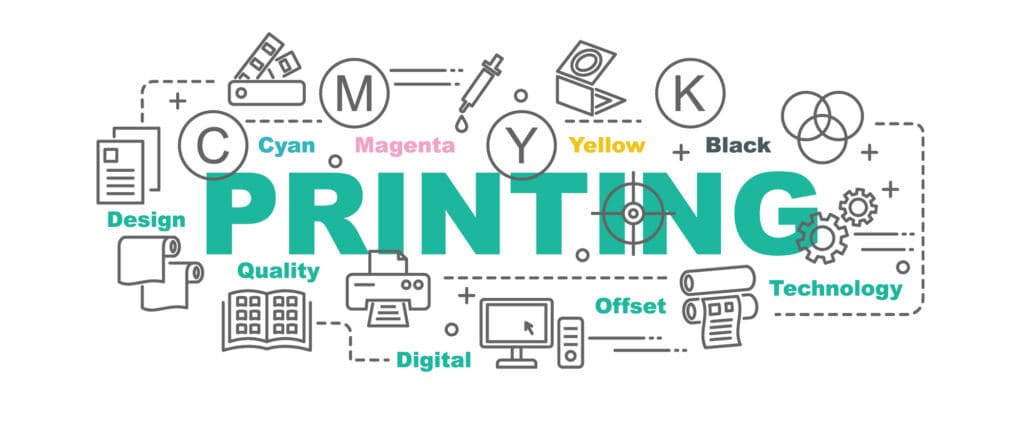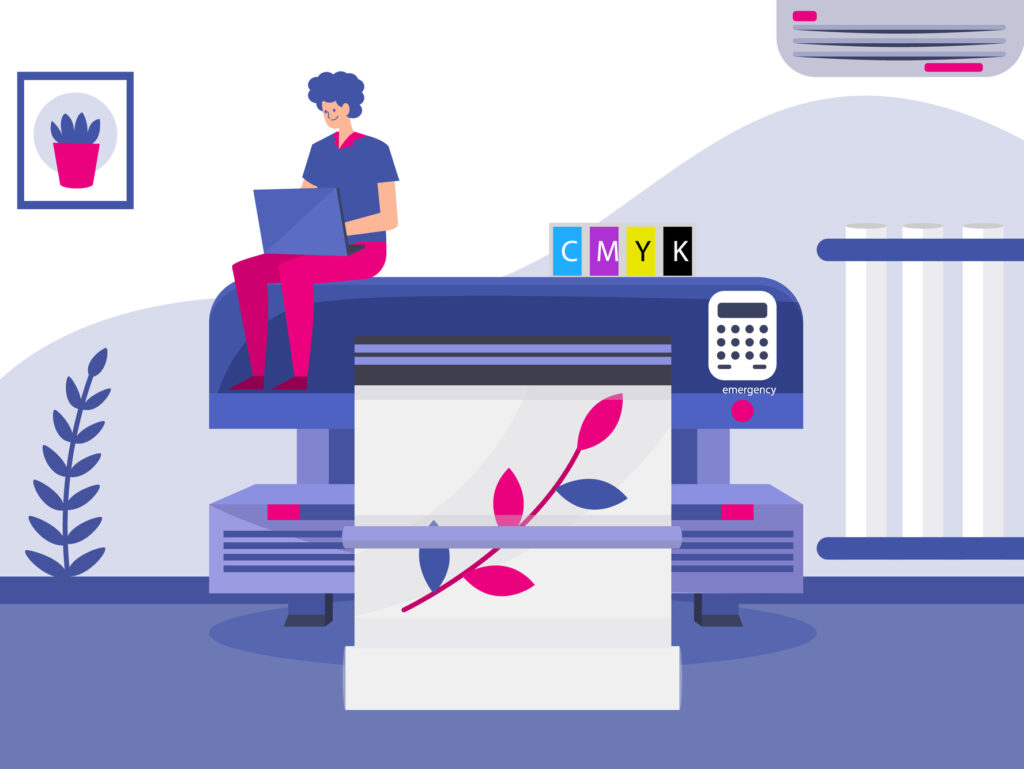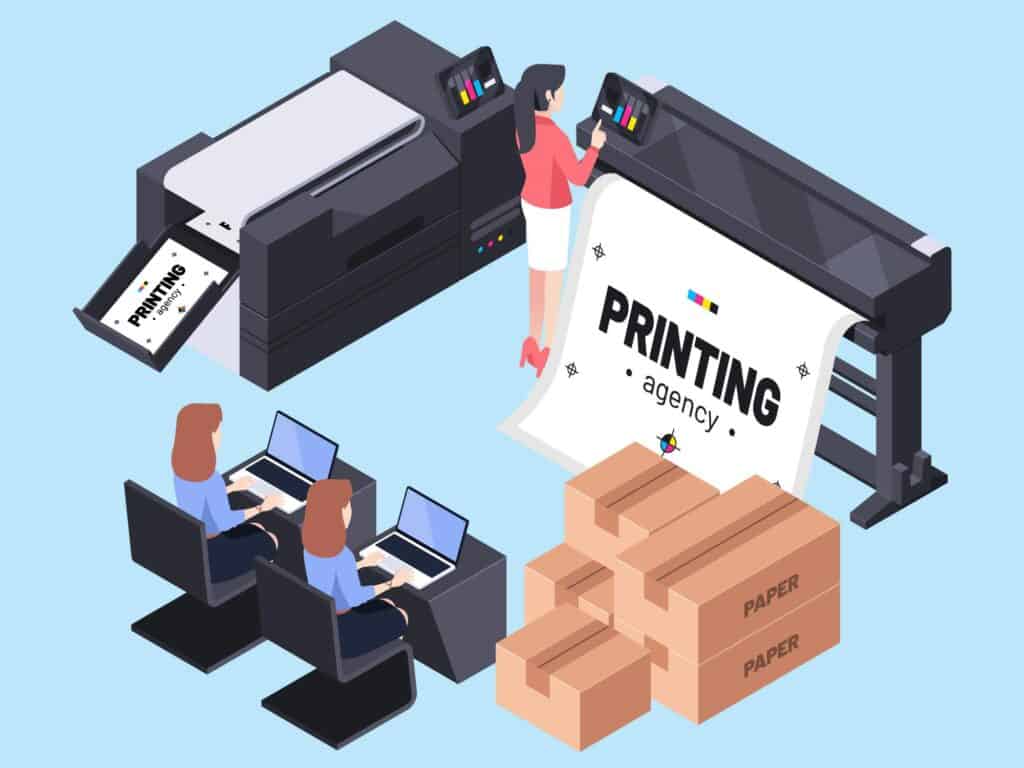
Download Your List Of
The 10 Best
Print-on-Demand Companies
I was confronted with a mass of unsold tomes in my domicile last month, leaving me dumbfounded. It was like sitting at the brink of a precipice, witnessing my aspirations precariously close to a chasm. This stockpile represented every author’s nightmare: the gamble of traditional publishing gone wrong.
Then I discovered print on demand books. Imagine this – only printing each book as someone orders it; no more financial avalanches from unsold copies. Picture turning your manuscript into a physical book without stocking up for World War III!
I bet you’re wondering how that works or if it could be the game-changer for your writing aspirations too. Stick around because we’ll dive deep into how POD can save costs and open doors worldwide – all while giving you total control over your creation.
Table of Contents:
- Understanding Print-on-Demand Books
- The Rise of Self-Publishing Through POD
- Benefits and Advantages of POD Services
- Choosing Trim Sizes and Design Options in POD
- FAQs in Relation to Print on Demand Books
- Conclusion
Understanding Print-on-Demand Books
Imagine a world where books spring to life one at a time, precisely when someone decides they can’t live without them. That’s the reality of print on demand books, an innovation that has flipped traditional book publishing on its head. For self-published authors and MoneyTreeSeed.com readers alike, this means no more garages filled with unsold novels or cash tied up in inventory.
What is Print On Demand?
Print-on-demand technology is not some mysterious sorcery, but a simple process. When your reader places an order for your book online, be it through Amazon Kindle Direct Publishing or another major online store worldwide, only then does the printing press roll into action—printing exactly one copy of your masterpiece.
This method doesn’t just save you from drowning in unsold paperbacks—it also opens doors to global distribution faster than you can say “bestseller.” Plus, popular trim sizes mean that whether you’re crafting small square art books or hefty textbooks, there’s a format that fits like Cinderella’s slipper.
If we peek under the hood of this streamlined process (don’t worry; no grease), we find print cost calculations as precise as Swiss watches and pricing calculators ready to crunch numbers quicker than high school math whizzes. All these gears turning together make sure writers keep control over their work while still delivering top-notch quality to eager readers’ hands—with none going to waste because remember: not one page gets printed before it’s sold.
Take a look at how seamless on-demand distribution works, and prepare yourself for the pleasant surprise waiting at every turn.
The Rise of Self-Publishing Through POD
Gone are days when ‘self-publish’ was code for spiraling costs and logistical nightmares. With services like Lulu offering free APIs designed specifically for businesses looking into book service integration—or even solo authors who just want things done right—the journey from manuscript completion to hitting shelves across continents is smoother than ever before.
You’ll need some savvy moves if international fame is what you seek. Strategies range from choosing engaging cover designs using intuitive design tools provided by most self-publishing services—to leveraging social media platforms pushing beyond borders so fans everywhere can discover your narrative treasures.
Discover strategies here for taking your stories global. Because let’s face it: Why should geographical boundaries dictate who enjoys your writing?
Benefits and Advantages of POD Services
- No upfront investment piling up pressure before selling even one copy? Check.
- Eco-friendly? Absolutely—print-on-demand not only reduces waste but also aligns with sustainable practices.
The Rise of Self-Publishing Through POD
Once upon a not-so-distant past, aspiring authors faced towering barriers to entry in the book publishing world. Traditional publishers were akin to gatekeepers guarding the hallowed halls of literature. Enter print-on-demand (POD) services, which have flipped the script and handed over the keys to those very gates.

How to Self-Publish a Book
Self-publishing through POD is like building your own rocket ship – it’s ambitious but totally doable with some know-how. First things first: you’ll need a manuscript that’s more polished than grandma’s silverware. Then comes designing an eye-catching cover because let’s face it—people do judge books by their covers.
The next step? Choosing where your masterpiece will call home from among various self-publishing guides and templates. Kindle Direct Publishing (KDP), for instance, is Amazon Kindle’s ticket into this arena; they offer direct publishing options that are as tempting as fresh cookies on an empty stomach.
Your labor of love then gets transformed into physical form without having to buy or store stacks on stacks of books—that’s what we call smart business. Print costs won’t keep you up at night thanks to pricing calculators provided by many POD companies, allowing you full control over profit margins down to the last penny.
Sell Your Book Internationally
Gone are days when selling internationally meant kissing goodbye hard-earned dollars just for shipping fees. With print-on-demand services offering global distribution—including giants like Amazon—authors can now reach readers across continents faster than ever before.
If broadening horizons sounds right up your alley—and why wouldn’t it—you can sell your printed wisdom using platforms detailed within our comprehensive guide on how authors expand their international footprint. Imagine someone sipping espresso in Rome flipping through pages you penned—or maybe enjoying a cuppa in London with your book propped open.
Lulu even offers businesses free access via its printing API so there really isn’t any excuse not get out there and shake hands globally…well virtually speaking anyway. It means no matter how small square trim size or large quantity ordered per book—it all becomes possible.
The Economic Wisdom Behind Print-On-Demand Books
- You save money—not needing an upfront investment allows more cash flow flexibility.
- Paperback books become financial sense rather than cents-less investments.
- No risk of unsold inventory gathering dust in forgotten corners.
Benefits and Advantages of POD Services
Imagine you’re a chef in a kitchen where ingredients magically appear only when customers order dishes. No waste, no excess—just what’s needed, when it’s needed. That’s the beauty of print-on-demand (POD) services for authors.
The Economic Smarts of On-Demand Printing
Gone are the days when writers had to shell out big bucks upfront or stash boxes of unsold books under their beds. With Kindle Direct Publishing and Amazon Kindle Direct Publishing leading the charge, print-on-demand has flipped that old script on its head. By printing books only as they sell, you dodge hefty initial costs and say goodbye to inventory woes. Plus, with no need to gamble on print runs, your wallet can breathe easy knowing each book printed is already spoken for.
Better yet? The pricing calculator tools offered by most POD companies let authors play around with numbers like profit margins and trim sizes before committing ink to paper—or rather toner to page. This means fine-tuning your budget becomes a breeze; tweak a few settings here and there until you find that sweet spot between cost efficiency and quality.
Sustainability: A Greener Page-Turner
In an era where “going green” isn’t just nice but necessary, POD is pretty much Mother Nature’s BFF in publishing circles—a sustainable process cutting down our carbon footprint one page at a time. Instead of printing large quantities destined for pulping later on—talk about environmental oopsies.—POD ensures we use resources responsibly by creating paperback books solely per demand. And yes, reducing paper waste feels as good as hitting bestseller lists.
Global Reach without Leaving Your Desk
Dreaming about readers sipping coffee in Parisian cafes flipping through your words? Or maybe cozying up under blankets somewhere snowy reading your chapters aloud? Well dream no more because thanks to global distribution networks including Amazon—you don’t have ship books yourself anymore—they’ll do it all for you. All those online stores scattered across different continents are now within reach faster than ever before—with business days feeling more like business moments.
This worldwide stage doesn’t discriminate either; whether it’s art books bursting with color or small square manuals packed with know-how—the world wants them all.
Fine-Tuned Control Over Your Creative Work
If maintaining control over your book design gets your author heart thumping louder than any thriller plot twist could manage then rejoice because direct publishing via POD means keeping that creative rein tight. You decide everything from cover art right down to binding type—and if a change calls mid-way through selling (maybe switching up from glossy to matte covers or tweaking the layout), you can make those updates without a hitch. This level of flexibility is ideal for indie authors who want their books to evolve alongside their growing audience.
You’ve got full control over your book—every detail from cover to binding type is yours to choose. And if you want to change things up later? No problem. POD makes updates easy, perfect for indie authors on the rise.
Choosing Trim Sizes and Design Options in POD
Picking the right trim size for your print-on-demand book is like choosing a frame for your art—it can make or break the visual appeal. But it’s not just about looks; different genres often favor specific sizes, making them more recognizable to readers. For instance, mystery novels may lurk on shelves at 5″ x 8″, while non-fiction tomes command attention with a stately 6″ x 9″. Print-on-demand services provide the opportunity to satisfy these unspoken regulations without having to settle for a universal size.

The Sweet Spot: Popular Trim Sizes
In the realm of self-published authors, where control over every aspect of book creation is paramount, deciding on trim size feels almost sacred. A popular choice that balances cost and convenience could be considered the ‘Goldilocks’ zone—big enough for an easy read but small enough for portability—is often found within popular trim sizes such as those listed by Amazon’s Kindle Direct Publishing platform.
These common dimensions aren’t random; they’re derived from what sells best across online stores worldwide. They also factor in printing process efficiencies which help keep costs down—a boon when you’re watching profit margins like a hawk. And remember, smaller books tend to mean lower shipping rates when you need to send copies yourself.
Going Big: When Larger Works Better
If we shift our gaze towards grander ambitions—like coffee table photo collections or comprehensive art books—the conversation changes tone entirely. These types demand large quantities of space per page not only for aesthetic breathing room but also because each detail needs its moment in the spotlight.
Sure, larger volumes might feel heftier on both hands and wallets due their higher print cost calculated through any available pricing calculator provided by most POD companies—but don’t shy away too quickly. Bigger pages pack a punch visually that could translate directly into sales volume if done right.
Finding Your Fit: Customization & Flexibility
Beyond standard offerings lies another level of customization offered by many POD services—you’re not stuck with cookie-cutter choices anymore. This means if none of the typical options fit your vision perfectly, go ahead and create something unique.
You’ll want to weigh this freedom against potential drawbacks though; custom-sized prints usually hike up prices since they deviate from established production lines optimized around more conventional selections (think traditional book standards). But hey—if it makes your heart sing (and doesn’t empty your pockets), why not?
Taking Charge with Book Design Tools
FAQs in Relation to Print on Demand Books
What is the best print-on-demand site for books?
Different sites cater to unique needs, but Amazon’s Kindle Direct Publishing leads in reach and ease of use.
How much does it cost to print a book on demand?
Cost varies by size, page count, and vendor; expect anywhere from $2 to $20 per unit.
Does print-on-demand print books?
Absolutely. Print-on-demand services crank out books as orders come in—no overstock headaches here.
Does Barnes and Noble offer print-on-demand?
Barnes & Noble has partnered with POD platforms like IngramSpark to give authors access to their network.
Conclusion
So you’ve learned that print on demand books can turn your writing dreams into reality without the nightmare of excess inventory. Start with understanding POD technology; it’s reshaping publishing and boosting author control.
Dive into self-publishing with ease, reaching readers globally. Let POD trim sizes and design tools sharpen your book’s appeal.
Embrace the sustainable side of printing—only what sells, no waste. Profit margins get a thumbs-up when print costs plummet.
If you’re set to take the leap, remember: create quality content, choose wisely from printing services, and watch your words travel far without leaving a heavy footprint behind.
The future is here for authors—it’s print on demand books at their finest!
Ready to start growing your own money tree? Building an online business from home offers incredible freedom and income potential. To get started on the path to passive earnings, download our free guide outlining 20 profitable online business models.

Download Your List Of
The 10 Best
Print-on-Demand Companies




